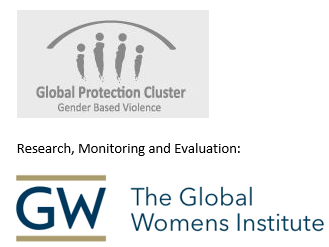- All actors working on prevention of and response to violence against women and girls have a responsibility to promote and protect human rights and ensure that survivors are treated with dignity and respect. However, in the past ten years, it has become recognised that the provision of services and goods through humanitarian and development programmes can put staff members in positions of power over the beneficiaries and communities. In the past, abuse of this power has led to sexual abuse and exploitation, such as exchanging food for sex. The international community has responded and organizations now have a responsibility to develop a Code of Conduct or standards that set out the responsibilities and acceptable behaviours for staff and others associated with the organization (e.g., partners, visitors, beneficiaries). (For more information, see Section II: Protection from Sexual Exploitation and Abuse.)Also see the PSEA Tools Repository at www.pseataskforce.org
- To ensure the that Protection from Sexual Exploitation and Abuse (PSEA) codes and standards are institutionalised, organizations should take the following key actions (bullets adapted from ICVA, n.d., pg. 9; Joint Consortium of Irish Human Rights, Humanitarian & Development Agencies, Irish Aid and Government Agencies, 2005; and the Irish Joint Consortium on GBV website at):
- Establish a PSEA policy at the organizational level. Post codes and standards in clear view in public areas of offices linked with the organization (lobbies, field offices, NGO-run schools, etc.). Ensure that documents are translated in the appropriate languages.
- Set standards of behaviour for all staff/partners and enforce them. Ensure that codes/standards are reviewed during the recruitment process and that trainings for new staff members are conducted. Provide a copy of the Code of Conduct to each employee, who should acknowledge, in writing, having received a copy.
- Allocate high level responsibility for addressing complaints.
- Ensure that complaint mechanisms are in place and that these systems will allow for a fair enquiry into allegations by competent managers.
- Integrate VAWG considerations into systems and procedures for appraisals, regional/country programme design, implementation and monitoring.
- Link with civil society organisations including international/regional/national NGOs and human rights organisations to develop effective ways of working together to combat PSEA.
- Give voice to the issue of VAWG in general and PSEA in particular in the organization (e.g. in management and staff meetings at local, regional and HQ level).
- Help staff members overcome their fears of sharing concerns about colleagues. Staff should be clearly told:
- When to report
- To whom to report
- How to report
- What will happen if they don’t report (including possible disciplinary measures).
- Many organizations have developed Codes of Conduct, similar to the example below, which present the core principles outlined in the Secretary-General’s Bulletin and can be modified and used as needed according to the organization and the setting (Ward, 2004b). For an example of a Code of Conduct used see the International Federation of Red Cross and Red Crescent Societies. See also an example of a code of conduct used by UNHCR.
Sample Code of Conduct
Source: Ward, J. (Ed.). 2004b. “Gender-Based Violence Tools Manual – For Assessment and Program Design, Monitoring and Evaluation in Conflict-Affected settings,” pg. 171. New York: Reproductive Health Response in Conflict Consortium
